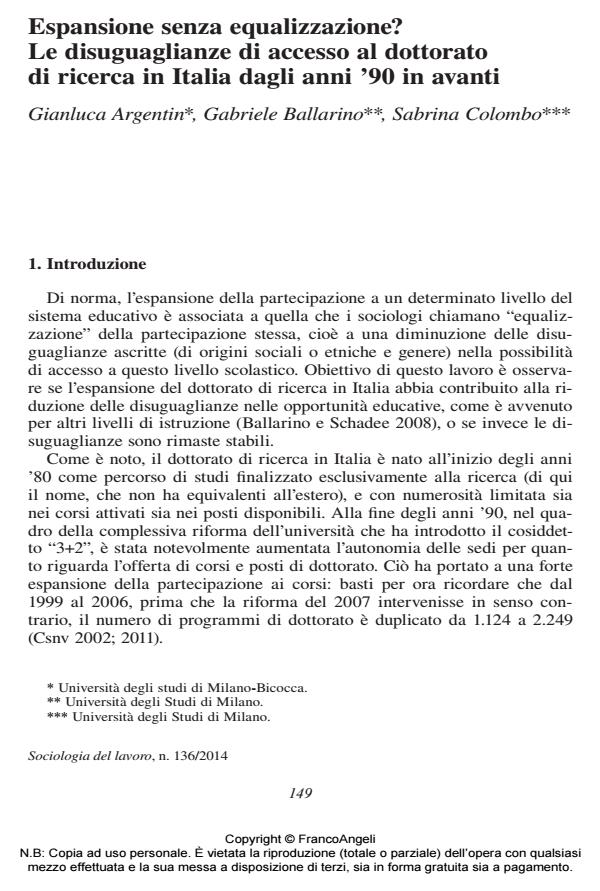Expansion without equalization? Inequalities of access to PhD in Italy from the 90s onwards
Journal title SOCIOLOGIA DEL LAVORO
Author/s Gianluca Argentin, Gabriele Ballarino, Sabrina Colombo
Publishing Year 2014 Issue 2014/136
Language Italian Pages 17 P. 149-165 File size 167 KB
DOI 10.3280/SL2014-136008
DOI is like a bar code for intellectual property: to have more infomation
click here
Below, you can see the article first page
If you want to buy this article in PDF format, you can do it, following the instructions to buy download credits

FrancoAngeli is member of Publishers International Linking Association, Inc (PILA), a not-for-profit association which run the CrossRef service enabling links to and from online scholarly content.
Typically, the expansion of the participation to a given level of education is associated with an equalization of participation, that is with a decrease of the ascribed inequalities in the opportunity to get the title itself. Relevant inequalities might relate to gender, family background, ethnic origin and so on. This paper asks whether this statement holds for the PhD courses in Italy. The question is relevant, as in Italy participation to this educational level increased by a factor of four between the late 90s and the mid 2000s. The analysis of two different databases of university graduates from this period (Almalaurea 1999- 2005; Istat 1992-2004) shows, however, that neither gender differences nor class differences have significantly changed.
Keywords: PhD, educational inequalities, social stratification, labour market, graduates
- Italian doctorate holders in the political and social sciences: career options, job growth and salary Alessandra Decataldo, Antonio Fasanella, Brunella Fiore, in International Review of Sociology /2019 pp.409
DOI: 10.1080/03906701.2019.1672350 - Professione vs. formazione: i dottorandi di ricerca in Italia Alfredo Ferrara, in SOCIOLOGIA DEL DIRITTO 2/2015 pp.67
DOI: 10.3280/SD2015-002003 - Italian PhD students at the borders: the relationship between family background and international mobility Valentina Tocchioni, Alessandra Petrucci, in Genus 14/2021
DOI: 10.1186/s41118-021-00127-5
Gianluca Argentin, Gabriele Ballarino, Sabrina Colombo, Espansione senza equalizzazione? Le disuguaglianze di accesso al dottorato di ricerca in Italia dagli anni ’90 in avanti in "SOCIOLOGIA DEL LAVORO " 136/2014, pp 149-165, DOI: 10.3280/SL2014-136008